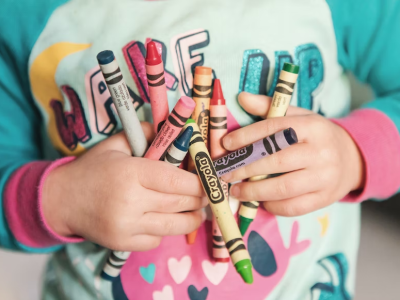Good manners are an important aspect of socialization and development for children. They play a critical role in helping kids navigate social situations, build strong relationships with others, and develop a positive self-image. Here are some key tips for teaching children good manners:
Lead by example:
Children learn from what they see and experience, so it’s important for parents and caregivers to model good manners themselves. This includes using polite language, saying “please” and “thank you,” and showing respect for others. By demonstrating good manners in their own behavior, parents and caregivers set a positive example for children to follow.
Make manners a part of daily life:
Incorporate manners into daily routines, such as saying “excuse me” when passing by someone, or asking to be excused from the table. This helps children internalize manners and make them second nature. It is important to be consistent in these practices and to make manners a regular part of everyday life.
Reward good manners:
Positive reinforcement is a powerful tool for encouraging children to continue good behavior. Praise children when they use good manners and acknowledge their efforts, even if they don’t always get it right. This type of positive reinforcement can go a long way in helping children feel confident and proud of their manners.
Be patient:
Children are still learning, so it’s important to be patient and understanding when they make mistakes. Encourage them to keep trying, and offer guidance and support as needed. Children may need repeated reminders and patience in order to develop good manners, so it is important for parents and caregivers to remain supportive and encouraging.
Teach social skills:
In addition to teaching basic manners, it’s important to help children develop social skills such as empathy, active listening, and cooperation. These skills will serve children well throughout their lives and will help them build strong relationships with others. By teaching children to understand and care about the feelings of others, they will be better equipped to use good manners in a variety of social situations.
Teach table manners:
Eating meals together is a great opportunity to teach children table manners, such as using utensils properly, not talking with their mouth full, and saying “please” and “thank you” when asking for things. Table manners are an important aspect of good manners, and are often required in formal and social situations.
Encourage kindness and respect:
Good manners go hand-in-hand with kindness and respect. Teach children to be considerate of others, and to treat others the way they would like to be treated. By fostering a culture of kindness and respect, children will be better equipped to use good manners in a variety of social situations. You can watch free kids cartoons to help you learn new skills and manners together.
Be consistent:
Children are more likely to adopt good manners when there are consistent rules and expectations in place. Be clear about what is expected, and hold children accountable when they fall short. Consistency is key in helping children internalize good manners, so it is important for parents and caregivers to remain consistent in their expectations and practices.
Teach technology manners:
With the increasing use of technology, it’s important to teach children how to use it in a responsible and respectful manner. This includes avoiding rude or inappropriate behavior online, using polite language in electronic communication, and respecting the privacy and personal information of others. By teaching technology manners, children will be better equipped to navigate the digital world in a responsible and respectful way.
In conclusion, good manners are an important aspect of children’s development and socialization. Check back soon for more.














Comments